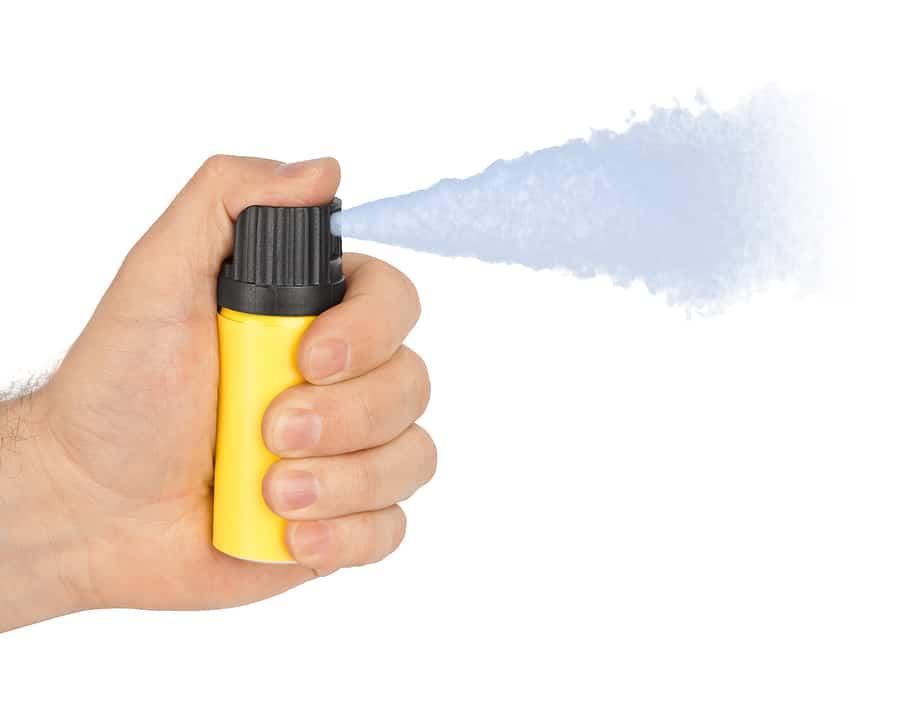Table of Contents
- Immediate Steps to Take After Pepper Spray Exposure
- Effective Techniques to Rinse and Soothe Affected Areas
- When to Seek Medical Attention for Pepper Spray Injuries
- Preventive Measures to Minimize Risks During Pepper Spray Use
- To Wrap It Up
Immediate Steps to Take After Pepper Spray Exposure
As soon as you’ve been exposed to pepper spray, it’s crucial to stay calm and act swiftly to minimize discomfort and potential injury. First, move away from the source of the spray to prevent further exposure. Avoid rubbing your eyes or skin as this can worsen the irritation. Instead, find a safe location where you can begin the decontamination process. If possible, remove any contact lenses to prevent the chemicals from being trapped against your eyes and rinse your eyes gently with clean, cool water or saline solution.
Next, address the affected skin by rinsing it thoroughly with cool water for at least 10-15 minutes. Avoid using soap or creams immediately, as they could intensify the burning sensation or react negatively with the chemicals. If you have access to a fan or can create airflow, it can help dissipate lingering particles in the air. Remember these critical steps:
- Do not rub or touch your face or eyes.
- Use water only for rinsing the affected areas.
- Remove contaminated clothing carefully.
- Seek fresh air to avoid further inhalation.
Effective Techniques to Rinse and Soothe Affected Areas
When dealing with pepper spray exposure, the immediate goal is to minimize irritation and prevent further damage. Begin by flushing the affected areas with cool, gentle water-this helps to dilute and wash away the capsaicin oils responsible for the burning sensation. Avoid using hot water or harsh soaps, as they can exacerbate the discomfort. If the exposure is to the eyes, keep them open and rinse continuously for at least 10-15 minutes using a clean water source or saline solution, if available. Tilt your head so that the water flows from the inner corner of the eye outward to prevent spreading the irritant.
For skin affected by pepper spray, use a mild, oil-based cleanser such as baby shampoo or dish soap to help break down the oily residue after rinsing. Gently blot the skin with a soft cloth instead of rubbing, which can worsen inflammation. Applying a cool compress afterward can further reduce pain and swelling. Avoid using creams or lotions immediately unless they are specifically recommended by a healthcare professional, as some products may trap the irritant or cause allergic reactions.
When to Seek Medical Attention for Pepper Spray Injuries
While most pepper spray exposures resolve with basic first aid, it’s crucial to recognize when professional care is necessary. If irritation persists beyond 30 to 45 minutes despite thorough rinsing with water, or if the victim experiences intense pain, difficulty breathing, or blurred vision, seek immediate medical assistance. Additionally, children, elderly individuals, and those with pre-existing respiratory or eye conditions should be evaluated promptly to prevent complications.
Pay close attention to warning signs such as:
- Severe or worsening eye pain that does not improve with flushing
- Persistent coughing, wheezing, or shortness of breath
- Swelling of the face, lips, or throat, indicating a potential allergic reaction
- Any signs of chemical burns or intense skin irritation unresponsive to home care
Preventive Measures to Minimize Risks During Pepper Spray Use
When handling pepper spray, always prioritize safety to reduce unintended harm. Ensure proper aiming by directing the spray away from the face and body of yourself and others not involved in the situation. Maintain a safe distance from the target, ideally between 6 to 10 feet, as this helps maximize effectiveness while minimizing the risk of blowback. It’s also advisable to use pepper spray only in environments with good ventilation to prevent accumulation of irritants that might affect bystanders or the user themselves.
Before deploying pepper spray, familiarize yourself with the legal restrictions and guidelines applicable in your area. Practice with an inert training model to build confidence and muscle memory, which can prevent mishandling during stressful moments. Keep your spray in an accessible but secure place, such as a belt holster, to avoid accidental discharge. Consider informing close contacts or coworkers about your pepper spray use to prepare them for any possible exposure and ensure coordinated assistance if needed.
To Wrap It Up
In conclusion, knowing how to respond promptly and effectively to pepper spray exposure can make a significant difference in minimizing discomfort and preventing complications. Remember to stay calm, avoid rubbing your eyes, flush the affected areas with plenty of water, and seek medical attention if symptoms persist or worsen. Being prepared with these first aid tips not only helps you protect yourself but also empowers you to assist others in distress. Stay informed, stay safe, and always prioritize your health in any unexpected situation.Check Our Other Blogs
- StunGun – Your Trusted Source for Stun Guns, Laws, and Self-Defense Tips
- PepperSprayLaws – Your Trusted Resource for Pepper Spray Information
- StunGunLaws – Your Trusted Guide to Stun Gun Legality and Safety




